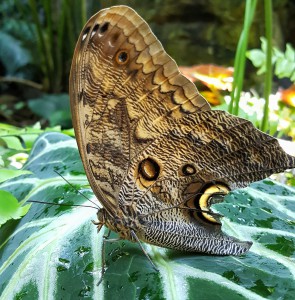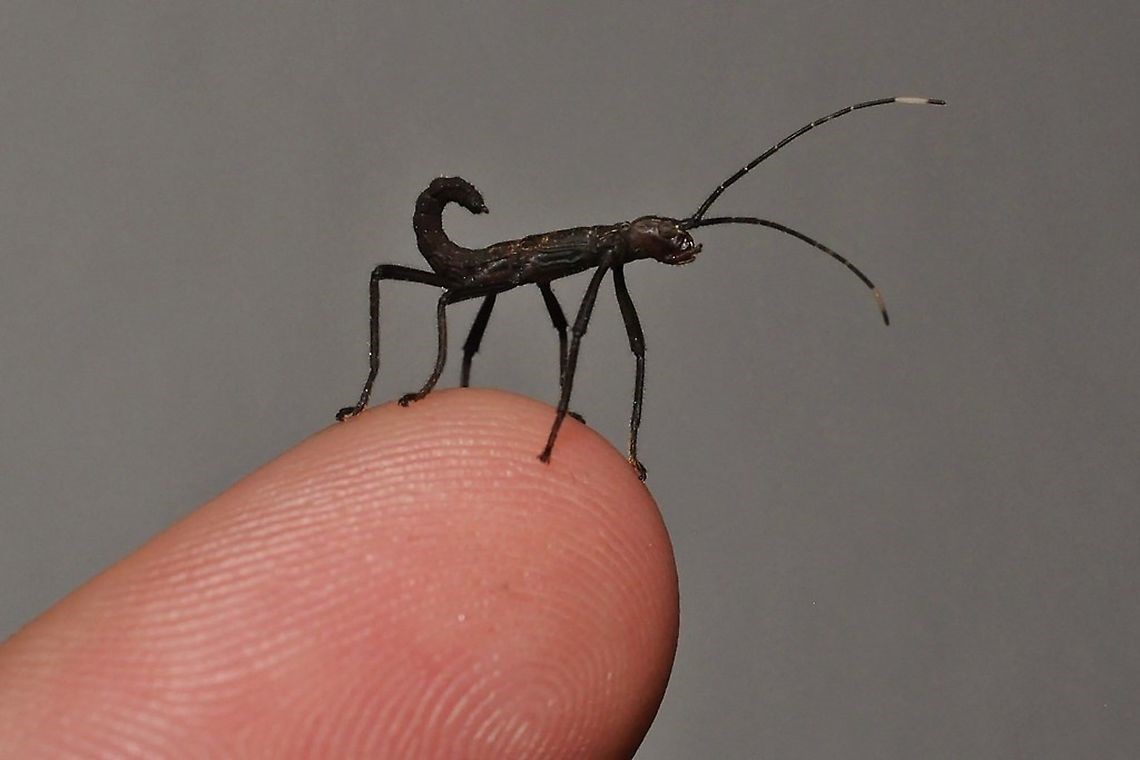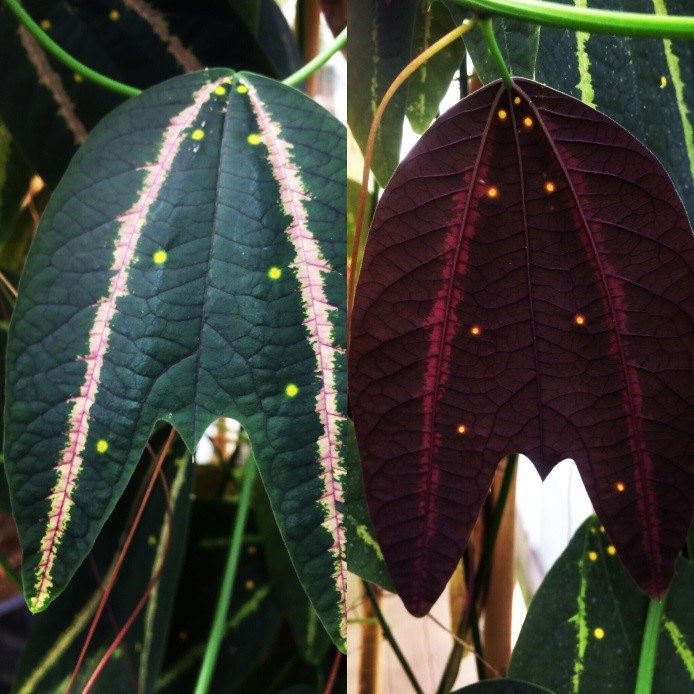An owl butterfly, to be exact. Join us this week at the Cockrell Butterfly Center to celebrate one of our favorite flutterers during An Evening with Owls. Named for the huge owl-like eye spots on the underside of their wings, these big beauties have wingspans that can reach up to seven inches or more! The upper side of their wings are often dull in shades of dusky blue and brown.
Owl butterflies don’t hoot, but they are in the genus Caligo which means darkness in Latin. This refers to the fact that they are crepuscular (most active at early morning and/or dusk). These butterflies feed on rotting fruit and their awkward flapping flight may remind you of a bat.

Though they are typically resting most of the day, you can often find them feeding mid-day on their favorite food: rotting fruit. Mmm-mmm, tasty.
What big eyes you have!
Due to their size and slow flight, owl butterflies are easy targets for many predators. Good thing those eye spots on their wings are not just for decoration! The spots’ uncanny resemblance to large eyes deter predators during the insect’s most vulnerable times, such as feeding, mating, resting or emerging from the chrysalis. However, these eye-like ornaments are also thought to act as targets which direct the predator away from their main body, allowing the butterfly time to escape.
Dusk + 1000 Owl Butterflies = Magic
There are 15 species of owl butterfly, four of which are flown at the Cockrell Butterfly Center. You can see two of these species featured this week at An Evening with Owls. The tawny owl (Caligo memnon) is most abundant species present. Typically, they have a wingspan of four to five inches but can reach up to six. The other species displayed this week is the forest giant owl (Caligo eurilochus) which has a slightly larger average wingspan than the tawny owl with a range of five to six inches.

The owls are brought in from butterfly farms in Central America, via FedEx! Each foam tray contains about 200 pupae and are carefully packed in each box.
For the first time ever we have increased our owl collection more than tenfold and will have more than 1,000 of these marvelous creatures feeding, flying, darting and chasing each other around at dusk. Your other favorite butterfly species will still be in attendance, but will be roosting rather than flitting about in the twilight. Keep your fingers crossed and hope that one, or a few, land on you!
Tickets are going fast for An Evening with Owls Friday and Saturday night. Don’t miss this one-time-only event!
Editor’s Note: Owl butterflies make great models, and the CBC an excellent portrait studio for butterfly photography! The images below were shot Tuesday night at around 7:30 p.m., after the owls had begun roosting for the evening along with the other butterflies. Photos were shot using a Nikon D90 camera on ISO 1600 with the snapshot fill flash.

Owl butterfly. Jason Schaefer.

Owl butterfly. Jason Schaefer.

Owl butterfly. Jason Schaefer.

Owl butterfly. Jason Schaefer.
You’ll find other roosting butterflies there and camera-ready, like these two species below.

The underside of blue morpho butterflies have spots, but don’t confuse them for the owls! Jason Schaefer.










